From coastal bays to snowy mountains, winter camping in Washington beckons outdoor enthusiasts to explore some of the state’s pristine landscapes without the crowds. Winter camping options include both snow camping and temperate, snow-free options. For those who want a few more creature comforts, you can’t beat glamping in a raised tent or yurt. So bundle up and get ready to take advantage of Washington’s year-round camping. And don’t forget the hot cocoa.
Where to go Winter Camping in Washington
While Mount Rainier National Park is often a go-to destination for winter camping in Washington, please note that winter camping at Mount Rainier is closed for the 2023/24 season.
Deception Pass State Park
Location: Fidalgo and Whidbey islands
Type: Temperate camping
Good for: Lakes, beaches
Head to Washington’s most-visited state park during winter to enjoy scenic coastline and old-growth forests without the summer crowds. Drizzly weather adds its own kind of beauty to the park’s historic bridges, tide pools, and lush forests of big-leaf maple, Douglas fir, cedar, hemlock, and spruce. Of the park’s three campgrounds, Quarry Pond is open during the winter. About 30 sites can be reserved, and another 30 are first-come, first-served. Showers, restrooms, and a picnic shelter are available.
Lake Wenatchee State Park
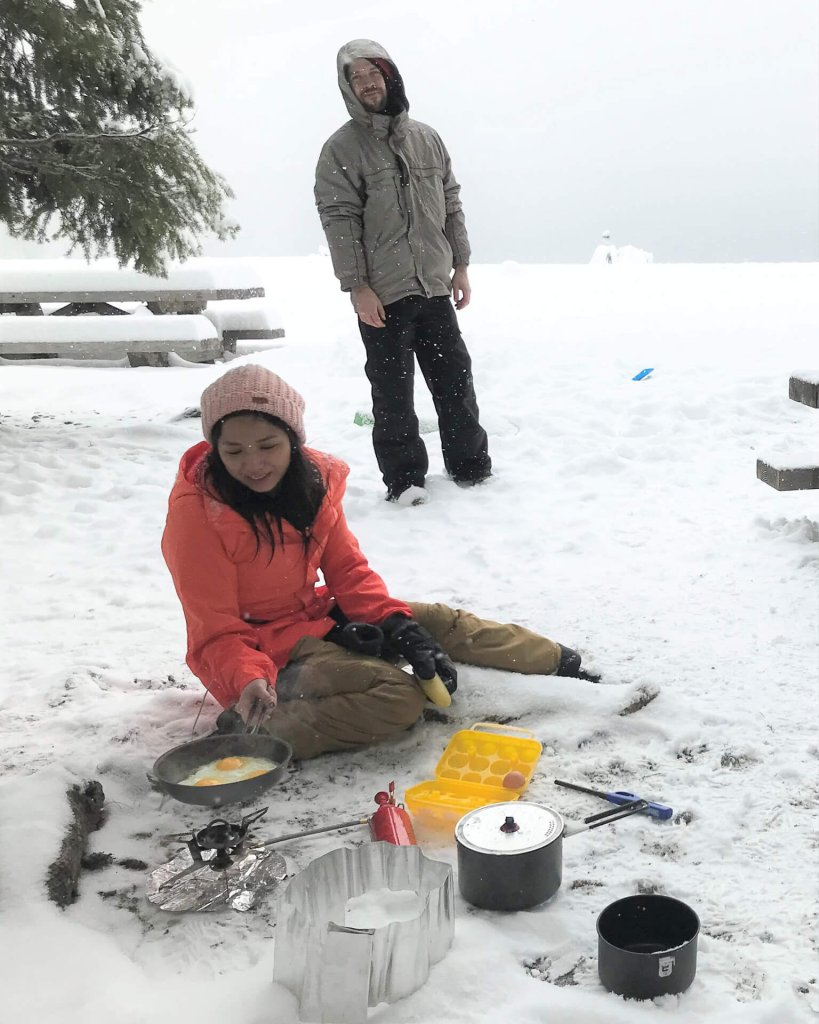

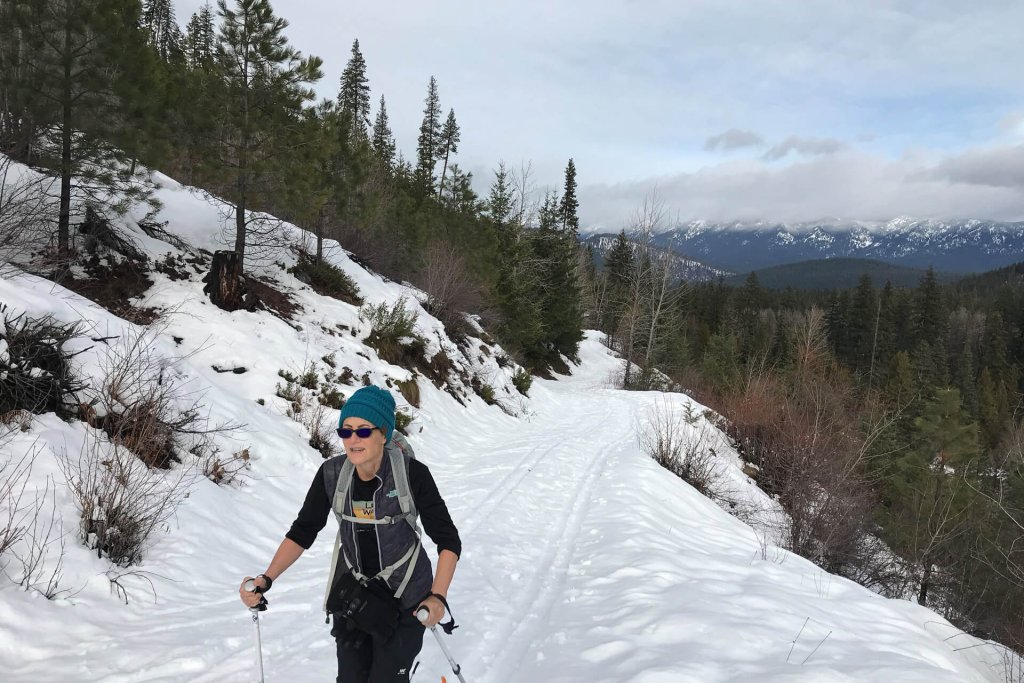
Location: North of Leavenworth
Type: Snow camping
Good for: Winter recreation, lake views, easy access, snow camping beginners, family
This state park hugs the shoreline where the Wenatchee River pours into deep blue Lake Wenatchee. Embedded in dense forest with lake and mountain views, the park transforms into a winter wonderland. Both snowshoe and groomed cross-country ski trails abound, and the sledding hill is perfect for families. Nason Creek Campground is open year-round and sites are available on a first-come, first-served basis October through April. Visitors can enjoy stand-out amenities like heated bathrooms with showers, plowed roads right to campsites, and covered shelters, making this a perfect introduction to winter camping in Washington. A Sno-Park permit is required.
Potholes State Park
Location: South of Moses Lake in Eastern Washington
Type: Temperate camping
Good for: Sand dunes, lakes, birding
Head east of the Cascade Mountains for clear winter skies and scenic lakes. Named for the many lakes in the area, Potholes State Park spans 640 acres with 6,000 feet of freshwater shoreline on the Potholes Reservoir. The shrub-steppe habitat, riparian lakeshore, and freshwater marshes make for excellent winter birding. Bring binoculars to the Frenchman Hill Trail Loop or explore the nearby sand dunes. Campsites are first come, first served from November through February and there is no potable water.
Doe Bay Resort and Retreat
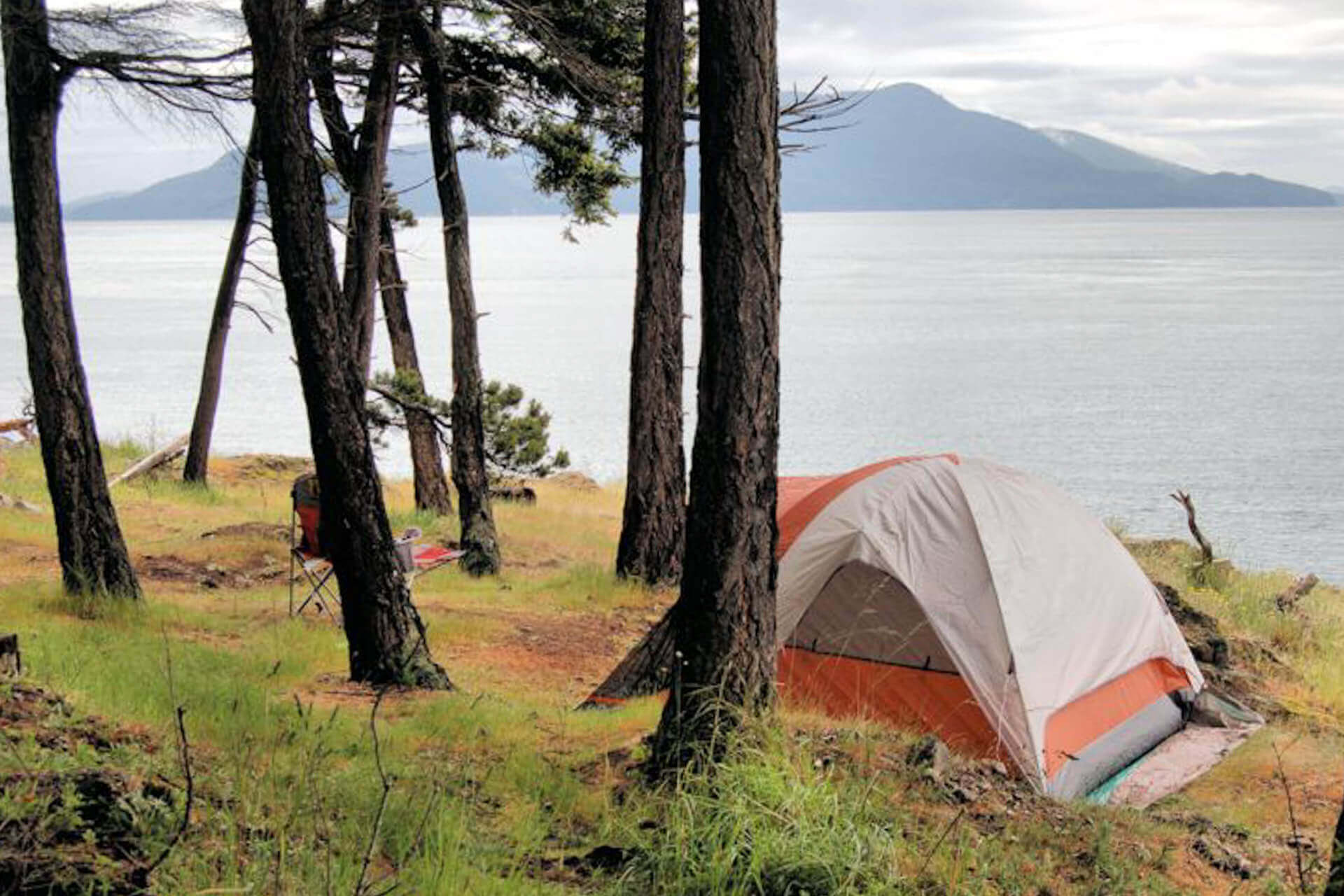
Location: Orcas Island in the San Juan Islands
Type: Temperate camping and glamping
Good for: Outdoor soaking, bayfront views, coastal forest
This nature resort encompasses 38 acres along the pristine coastline of Rosario Straight. Camp at a tent site (both walk-in and drive-in are available) or stay in a yurt. Sprinkled throughout the property, the sites nestle into evergreen forest and perch overlooking the sea. Soak in jetted outdoor tubs with a view of the bay. Clothing is optional, and guests must reserve their soaking sessions in advance. People can reserve private use of the facilities for an extra fee; private reservations are the only option for offsite guests.
Sunset Falls Campground
Location: Western border of the Gifford Pinchot National Forest
Type: Temperate camping
Good for: Waterfalls, family, ADA-accessible trail
Less than an hour northeast of Vancouver is Sunset Falls. The campground centers around the falls, which cascade over a rocky outcrop at the intersection of the East Fork of the Lewis River and Snass Creek. A paved 0.2-mile trail leads to a waterfall viewpoint. With just 18 sites, the campground is cozy. You’ll find picnic tables, campfire rings, grills, and vault toilets but no potable water. From mid-September through late May, campsites are first-come, first-served.
Heart O’the Hills Campground
Location: Olympic National Park
Type: Snow camping
Good for: Old-growth forest, snowshoeing
Just 10 minutes south of Port Angeles, this first-come, first-serve campground in Olympic National Park is on the way to Hurricane Ridge, a popular spot for skiing. Heart O’the Hills is a base for several trails, including Heather Park Trail to Klahhane Ridge, Heart O’the Forest Trail through old-growth, and Lake Angeles Trail to a magnificent mountain lake. Don’t forget your snowshoes! This low-key, family-friendly spot has restrooms, though water spigots are turned off. If snow is present (typically December-February), visitors must park at the gate and walk about a ¼ mile into the campground.
Lake Easton State Park
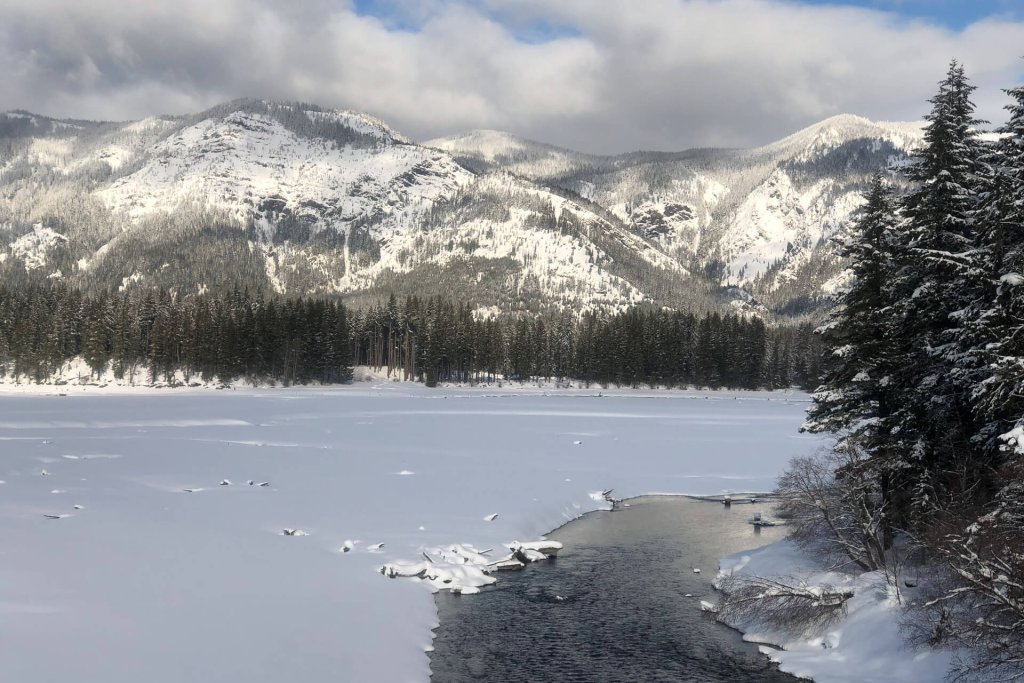
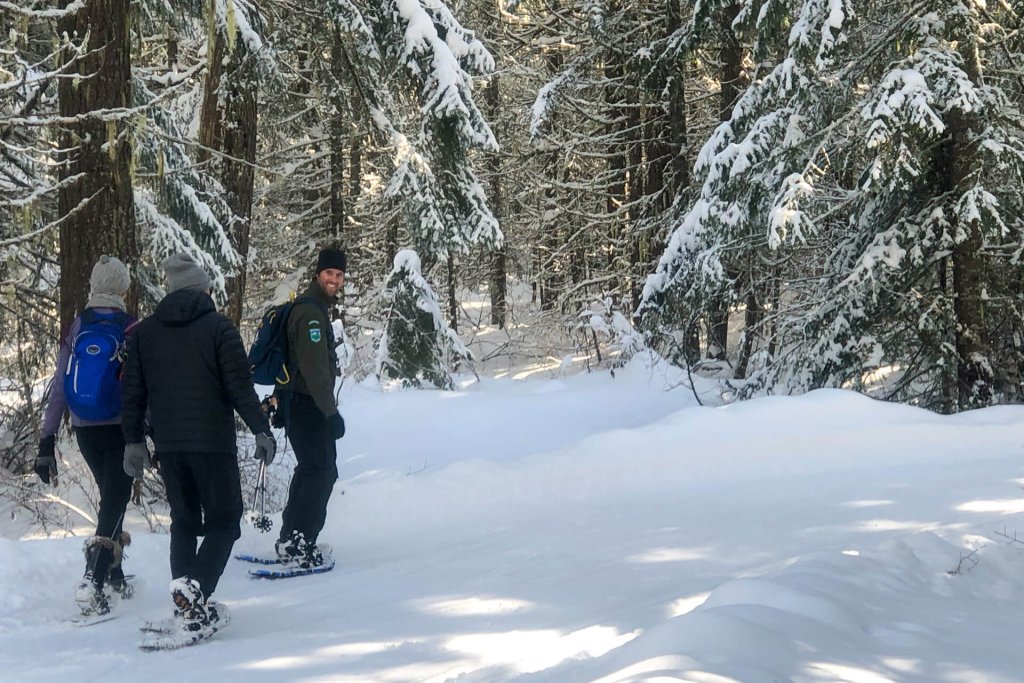
Location: East of Seattle off Interstate 90
Type: Snow camping
Good for: Easy access, winter recreation
Just east of Snoqualmie Pass, a glacier-cut lake is the centerpiece of this 516-acre park. Surrounded by forest with vistas of the Cascade Range, Lake Easton State Park is a prime spot for cross-country skiing, snowshoeing, and snowmobiling. Its groomed ski trail winds past the Yakima River and is great for classic and skate skiers alike. From December through March, camping is allowed in the day-use area and requires a sno-park permit. Water and heated restrooms are available, making this another great winter camping destination.
Lopez Farm Cottages
Location: Lopez Island in the San Juan Islands
Type: Temperate glamping and camping
Good for: Quiet, adults-only, farm stay
Set on an island known for its laid-back pace, this 29-acre pastoral property is perfect if you’re looking for tranquil winter camping in Washington. With no loud music or kids allowed, peace is prioritized. Stay in a canvas tent on a raised cedar deck with furnishings and linens, or camp more traditionally among the towering old-growth groves. Amenities in the communal camp buildings include hot open-air showers, flushing toilets, fire pits, a barbecue, bocce ball court, a sheltered fireplace, and outdoor kitchens equipped with sinks, microwaves, instant hot water, and picnic tables. Just 2.5 miles away, oceanfront Spencer Spit State Park has great water access.
Tahuya Adventure Resort
Location: Kitsap Peninsula
Type: Temperate camping and glamping
Good for: Easy access, ATVs, hiking
Surrounded on three sides by Tahuya State Forest, this adventure resort is a lush retreat from the city (Seattle is just 75 minutes away). Many guests come for its epic ATV trails, which are accessible onsite. Others come to enjoy the forests; the Gold Creek Trailhead is 3 miles down the road and only allows non-motorized traffic. From there, hike a 5-mile loop up Green Mountain for spectacular panoramas. Both fully-equipped canvas tents and traditional campsites are available. Guests enjoy heated bathrooms, hot showers, and a covered outdoor community kitchen.
Winter Camping Safety
While winter camping in Washington can be magical, with quiet landscapes and minimal crowds, it also involves extra planning to stay safe and comfortable, especially when venturing into areas with snow. “The most important thing to remember about winter camping is that it requires a little more precaution,” says Amos Almy, a ranger in Olympic National Park.
Making Camp
Come prepared with the right gear to make the most of your winter camping experience. Here are some gear tips:
- A tent rated for three seasons may work, but a four-season tent is best for frigid or windy weather.
- If there’s fresh snow, stomp down the footprint for your tent and vestibule area so you don’t sink into a snow depression as you sleep.
- Bring snow stakes in place of regular tent stakes.
- Bring sleeping pads that are long enough for your whole body and will insulate properly on frozen surfaces. A good rule of thumb is to look for a sleeping bag that’s rated 10°F colder than the coldest temperature in the weather forecast.
- Make sure everything is put away at night, so nothing gets covered if it snows overnight.
Staying Warm and Dry
When temperatures drop, you need to eat and drink enough to support your body as it works hard to keep you warm. Follow these tips to enjoy a comfortable winter camping experience:
- Take off layers when you’re hot to avoid sweating through clothes and add layers immediately when you’re cold.
- Always bring extra clothes and hand warmers.
- Bring your gear into your tent, filling up the floor space and creating an insulating effect.
- To warm your sleeping bag, fill a metal water bottle with boiling water, then cover it with a thick sock before slipping it into your bag.
- Sleep in a hat.
- Give your body plenty of fuel. “Eat more food than usual,” Almy says. “Your body uses extra energy to stay warm, so keep up by eating more calories.”
About the Author
Ellee Thalheimer is a freelance writer and guidebook author based in the Pacific Northwest who has contributed to publications like Lonely Planet Guidebooks, Alaska Airlines Magazine, and Adventure Cyclist Magazine. When she can’t get outside, she writes fiction, drinks local IPAs, and perfects her handstands.
Featured image: Photo courtesy of Washington State Parks
